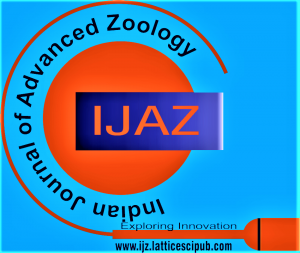![]()
Some Haematological Observations in Columba Livia Due to Haemoproteus Infection
Nasim Jahan1, Ramesh Chandra2, Mohd Shoeb3
1Nasim Jahan, Haji Rashidan Begum and Haji Sahab Jahan Education Institute, Ganjdundwara, Kasganj (U.P), India.
2Ramesh Chandra, Swami Shukdevanand College, Shahjahanpur (U.P), India
3Mohd Shoeb, Gandhi Faiz-E-Aam College, Shahjahanpur (U.P), India.
Manuscript received on 29 August 2021 | Revised Manuscript received on 09 September 2021 | Manuscript Accepted on 15 October 2021 | Manuscript published on 30 October 2021 | PP: 1-2 | Volume-1 Issue-2, October 2021. | Retrieval Number: 100.1/ijaz.A2901101221 | DOI: 10.54105/ijz.A2901.101221
Open Access | Ethics and Policies | Cite | Mendeley | Indexing and Abstracting
© The Authors. Published by Lattice Science Publication (LSP). This is an open-access article under the CC-BY-NC-ND license (http://creativecommons.org/licenses/by-nc-nd/4.0/)
Abstract: Birds contribute indirectly to human welfare as majority of them feed on insects and rodents and some are efficient scavengers. Poultry forming is a leading profession which provides nutritive food products for human consumption. However, these valuable resources can be infected with a wide range of blood parasites which may affect their survival and existence. In this study, the impact of Haemoproteus, an intracellular sporozoan parasite of the common pigeon. Columba livia on some heamatological parameters (Hb% and TEC) was examined. The investigations were conducted in two groups of Columba livia. Group A: Control, Group B, Heamoproteus infected. The Hb values (13.410.17gm/100ml) in Group A decline to (10.8±0.37 gm/100ml) in Group B. TEC in Group B also declined to 1.620.05×106/Cmm from the normal values of 2.19±0.02×10/Cmm in Group A. The fall in Hb% was 18.97%. and that in TEC was 24.2%. The values of TEC are more affected (24.2 %) as compared to Hb (18.97%). Being an intracellular parasite, the metabolism of Heamoproteus appears to be directly associated with the cells.
Keywords: Columba livia, Haematological Parameters, Haemoproteus Infection
Scope of the Article: Ornithology
